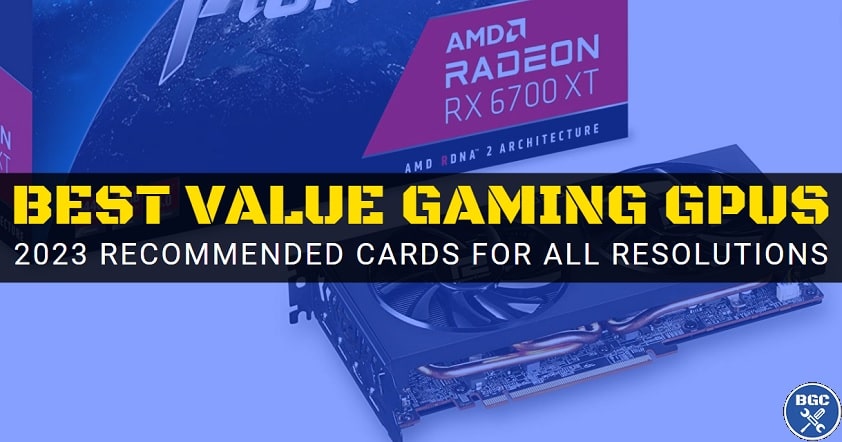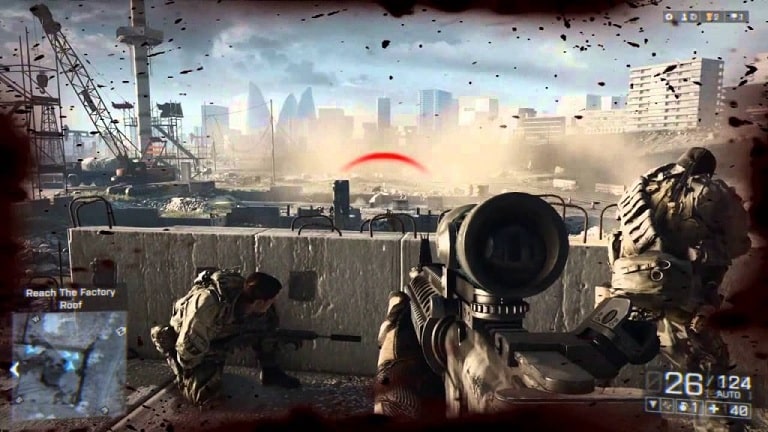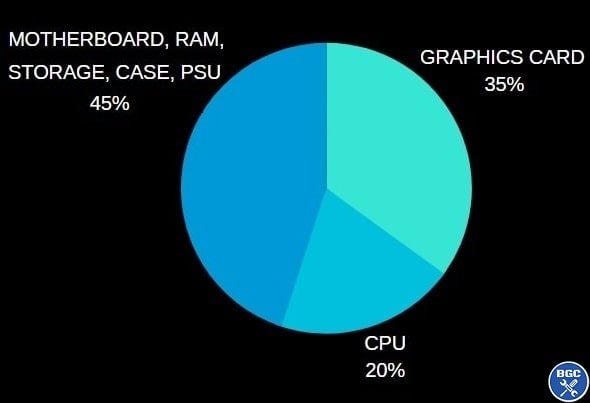Home > Best GPUs
Top 3 Best Value GPUs for Gaming/VR
Recommended Bang for Buck Graphics Cards in Q1 2023 (1080p, 1440p, 4K/VR)

Last Updated: January 29, 2023
The GPU market is in a much better place this year, with pricing and availability light years better than the past couple years where we all witnessed one of the biggest GPU droughts of all time partly due to cryptocurrency miners buying up all graphics cards in sight. At least nowadays gamers can actually find and buy GPUs in stock and at reasonable prices near (or even below) their MSRP.
If you're looking to choose the best value GPU for gaming or VR - whether on a budget or with more to spend on a high-end graphics card, in this article we've rounded up the current best graphics cards for the money right now as the market stands leading into February 2023.
Best Value GPU for 1080p: AMD Radeon RX 6600 8GB
Check Price: Amazon US
Right now in 2023, AMD graphics cards are generally the best value GPUs for gaming when you compare prices of AMD vs NVidia cards. Especially when hunting the best GPU for gaming at 1080p resolution - the RX 6600 and its slightly faster and more expensive brother the RX 6650 XT are the value kings of the budget and lower mid-range GPU market at present, with NVidia's competing cards in the RTX 3060 and RTX 3050 offering considerably less bang for buck at their current prices. Unless you find a good price on these budget/mid-range NVidia cards in your particular region, it's hard to ignore the RX 6600 or RX 6650 XT.
Both cards offer a great 1080p gaming experience, as well as passable 1440p performance in many titles. Oh, and at current prices I'd give the 6600 XT a miss, seeing as the 6650 XT is faster and cheaper. If you find the 6600 XT for less than a 6650 XT in your region, it would be worth considering though. As for the slower RX 6500 XT, see the guide on the best budget GPU under $200 which covers graphics cards in that lower price segment for entry-level gaming PC builds.
If you're set on getting a NVidia card for whatever reason, I'd still also consider the RTX 2060 instead of the RTX 3050 or RTX 3060. At the time of writing you can sometimes find a new RTX 2060 for under 240 USD. If you find the RX 6600 around the same price then I'd just stick with it as it's the faster and newer card, but one reason to get a 2060 over a 6600 (if they're the same price) would be for the superior ray tracing performance of the RTX 2060 (roughly 15-20% better than the RX 6600), though at this price range you should consider forgetting about ray tracing (which is not necessary and basically a luxury nice-to-have rendering feature) and just aim to get the best "normal" gaming performance you can get for your money.
Oh and if you find the RTX 2060 Super for around this price, that's also worth a look despite its age as it holds up well in modern games (and performs decently for VR; I played through Half Life Alyx on a 2060 Super and it ran smoothly for most of the game at medium settings). When hunting older cards like the 2060 or 2060 Super, don't forget to consider buying a used GPU to save a chunk of change - used cards are of course the true best value GPUs on the block for those who don't mind taking on the slight risk of getting a second hand card that could have been used extensively (or mined on).
For those who own a 1080p 144Hz monitor for fast-paced gaming, all GPUs mentioned above are going to be quite decent for 144Hz in most games if you tweak your settings (and assuming your CPU is good enough for 144FPS in that particular title). If you're using a 1440p monitor though, the RX 6600 is going to struggle in modern demanding games, and the 6650 XT would also have a hard time. If you want good 1440p frame rates in AAA titles, you'll need more firepower. Speaking of which, that wraps the best budget GPU for gaming at 1080p, so let's get into the faster cards for higher resolution displays.
Honorable Mentions:
AMD Radeon RX 6650 XT (8GB GDDR6)
AMD Radeon RX 6600 XT (8GB GDDR6)
NVIDIA GeForce RTX 3060 (8GB or 12GB GDDR6)
Best Value GPU for 1440p: AMD Radeon RX 6700 XT 12GB
Check Price: Amazon US
As mentioned above, in the current GPU market if you want the most bang for buck to build the best gaming PC for your money, AMD's RX 6000 series of graphics cards are your friend at the moment as they're typically more competitively priced relative to NVidia in the current market. The 6700 XT will dominate 1080p resolution gaming at max settings, and will perform very nicely for 1080p 144Hz monitors, but it's also more than suitable for excellent 1440p performance on good settings (60FPS at high/ultra settings depending on the title).
NVidia's competing cards, the RTX 3060 Ti and RTX 3070, are less overall bang for buck based on current pricing, but if you want the best ray tracing performance for titles that supports this feature then they are worth considering seeing as NVIDIA does slightly outshine AMD in that area (just remember not everyone cares for enabling ray tracing in the games that support it; it's just extra eye-candy that won't make a big difference to the experience generally speaking). NVidia cards also have the advantage of DLSS support in the games that include a DLSS option, but AMD does have a comparable feature that comes close in quality (FSR) so I don't think the lack of DLSS in AMD cards is a deal breaker.
The 6700 XT is also one of the best value GPUs for VR gaming as shown by this 6700 XT VR gaming benchmark and will allow you to run high settings smoothly in most VR titles (and maxed-out 'ultra' settings in some). The 6700 XT and RTX 3060 Ti are close in VR performance, but the 6700 XT can be found for cheaper making it the better value option (the factors of ray tracing performance or DLSS support does not matter for VR). A faster card like a 6800 or 6800 XT would be ideal for the ultimate VR setup, but a 6700 XT will run most PC VR headsets just fine.
Honorable Mentions:
AMD Radeon RX 6750 XT (12GB GDDR6)
NVIDIA GeForce RTX 3060 Ti (8GB GDDR6)
Best Value GPU for 4K/VR: AMD Radeon RX 6900 XT 16GB
Check Price: Amazon US
AMD wins the value war once again for the high-end price segment, though it's a less clear-cut victory compared to the cheaper categories above. Their previous flagship gaming card, the Radeon RX 6900 XT, has significantly dropped in price over recent months to the point where you can find them for under and around $750 US, a price tag that makes it one of the better value high-end GPUs (its original MSRP was $1000).
Competing NVidia cards like the RTX 3080, RTX 3080 Ti, and RTX 3090 are all generally more overpriced at the time of writing this, as is AMD's own RX 6800 XT. The standard RX 6800 is decent value though, so that's another good value option if a 6900 XT is out of your budget. AMD and NVidia's latest GPUs, the RX 7000 and RTX 4000 series, are also quite overpriced at present. Though if you must choose from the very latest generation because you want the cutting edge, the RTX 4070 Ti seems the best bang for buck out of these latest GPUs.
With great power comes great choice; if super high-res 4K is not your thing, with a 6900 XT in your arsenal you're free to choose a gaming monitor of any resolution and refresh rate and you'll get top performance, whether that's 1440p 144Hz, 1080p 240Hz, or even 1080p 360Hz for the zero eSport pros reading this. The 6900 XT is also a beast for VR gaming, that'll easily handle most demanding VR titles at max settings (just perhaps not anomalies like MSFS). The 16GB of extra-fast GDDR6X memory is also plenty to be "future proofed" for any current and future VRAM-hungry games.
Don't get me wrong with all of these AMD cards getting recommended: NVIDIA's high-end GPUs are well worth considering right now as well if the price is right. As mentioned, their latest RTX 4070 Ti is arguably the best bang for buck among the new RTX 4000 series (4080 and 4090 are much too overpriced). Plus, when it comes to ray-tracing, in the handful of titles that support it like Control, Cyberpunk 2077 or Minecraft, NVIDIA does have a slight edge in performance.
Also, NVIDIA's exclusive DLSS feature is a game-changer for allowing playable ray tracing at 4K (AMD's equivalent tech, FSR, is decent but slightly behind). NVIDIA cards also include better hardware encoders for anyone building a streaming and gaming PC. If you don't care about these things though, overall, AMD and NVIDIA graphics cards are neck and neck right now for the high-end gaming GPU crown, so either is going to serve you well for cutting-edge gaming system.
Honorable Mentions:
AMD Radeon RX 6950 XT (16GB GDDR6)
AMD Radeon RX 6800 (16GB GDDR6)
AMD Radeon RX 6800 XT (16GB GDDR6)
NVidia GeForce RTX 4070 Ti (12GB GDDR6X)
NVidia GeForce RTX 3070 (8GB GDDR6)
How to Know a GPU Will Fit? (Case Compatibility)
The actual physical size of a video card may be an issue when it comes to compatibility with your other components, especially if it's a large/long GPU and you don't have a huge case. Rule numero uno when choosing the right graphics card for your PC build is to confirm that your case will fit your new beast by checking the maximum supported GPU length found on the spec sheet of your case compared to the length of the specific GPU model you're planning on getting.
GPUs also vary in both how many PCIe slots they take up on the motherboard (they only plug into one but can hover over other PCIe slots) as well as how many rear metal brackets they take up in your case. These may be worth checking if you either have an extra large or wide GPU and are worried about compatibility, or if you're building in a small case and want to ensure your GPU will fit both your motherboard and case. See our guide to graphics card slot sizes for more on this.
How Much Should You Spend on a Graphics Card?
As mentioned, the video card is the single most crucial component of all in regards to how fast/smooth your games will run, and at what graphics quality settings you'll be able to run them at. Modern games contain thoroughly complex, detailed and dynamic 3D scenes with all sorts of special rendering and lighting effects thrown on top, which can really tax your system heavily. The better your graphics card, the faster your computer will be able to handle all of these computations on the fly and output them on-screen, making for a smoother, higher-quality visual experience.
If your graphics card isn’t good enough for the specific games you want to play (and for the resolution and in-game graphical settings you desire to run the game at) the in-game performance is going to suffer. In other words, your frame rate will be low, which results in the on-screen action appearing to lag/stutter. At best, this slowdown can hinder your enjoyment a little, and at worst the game becomes straight-up unplayable if your frame rate dips below 20-30FPS too often so (or doesn't even run to begin with).
But how powerful of a GPU you'll be needing to buy to avoid lame lag getting in the way of your fun will differ from gamer to gamer. Factors such as the resolution and refresh rate of your monitor play a part in how much graphical grunt you'll need, but a huge determining factor as well is the types and specific games you'll be playing. Different games can vary massively in their hardware requirements.
For example, the difference in the hardware requirements of CSGO (an old title running on a fairly basic graphics engine, at least by today's standards) compared to a fresh new AAA blockbuster like Red Dead Redemption 2 is quite vast. One can run super-smooth on almost any super-cheap "potato" PC, while the other will require a fairly beefy GPU in order to get smooth performance (especially at higher settings and/or resolutions).
 With a poor graphics card, hectic high-action scenes in your games will take their toll on your frame-rate
With a poor graphics card, hectic high-action scenes in your games will take their toll on your frame-rateAlso, if you buy a more expensive high refresh-rate gaming monitor (such as 120Hz, 144Hz, or even 240Hz), your hardware requirements will be increased further. For example, if you get a 144Hz gaming monitor, to take full advantage of that screen you'll want to aim to get around 144FPS (frames per second) which requires a more powerful GPU. Though do keep in mind that even if you get a 144Hz monitor, even getting 100FPS or so is still fine as you'll still see those extra frames. In other words, you don't need to get 144FPS if using a 144Hz screen.
Related: FPS Differences (30FPS vs 60FPS vs 144FPS)
Generally speaking, as a gamer you want to buy the best graphics card you can afford, as you'll not only get the fastest performance now but the card will last you longer without having to upgrade. But there is also the other side of the argument of overspending, as you don't want to spend money on a card that's totally overkill for your particular usage - especially if you're trying to be cost-effective like many gamers. As a real world example of overspending, if you’ll be sticking to a standard 1080p monitor that has a 60Hz refresh rate, all you need to make the most of that screen is to get 60FPS performance. So if you spend the extra money on a GPU that's capable of getting a much higher frame rate of 150FPS, you could have gotten away with a much cheaper card.
 Modern AAA games have impressive rendering and special effect features that'll require beasty GPUs to take advantage of
Modern AAA games have impressive rendering and special effect features that'll require beasty GPUs to take advantage ofBelow is a chart showing roughly how much of your overall PC build budget you should look to spend on the GPU if your aim is to fully maximize the gaming performance of your new PC. So for example, when planning a gaming PC build for say $1000, to maximize gaming performance you should be looking at choosing a graphics card around $350 (no less than $250 and no more than $400). Keep in mind we're only talking in terms of the core hardware components here, and not accessories like your monitor, because if we included the gaming monitor in our chart it would be too difficult to give a rough estimate percentage (as monitor purchases can vary wildly from a cheap $100 1080p 60Hz display to a high-end $1000 4K display).
Shooting for this 25 - 40% range allows you to maximize gaming performance but avoid having to sacrifice too much on your other still-important components, such as still getting a good gaming CPU, RAM and so on. Building a PC is a balancing act, and you could say your system is only as strong and reliable as your weakest link (so don't go too cheap on your power supply selection). That's why it's not practical to throw too much more than 35 to 40 percent on your graphics card choice, such as getting a 600 dollar GPU for a $1000 build, as you'd be very limited in what other parts you get.
 General estimates when building a gaming-focused PC. For a hybrid gaming AND workstation computer, spend a bit less on the GPU and more on the CPU (& RAM)
General estimates when building a gaming-focused PC. For a hybrid gaming AND workstation computer, spend a bit less on the GPU and more on the CPU (& RAM)Are Factory Overclocked GPU Models Worth It?
You'll notice some graphics card models have SC or OC in their model name, which stands for SuperClocked and Overclocked. This simply means the card is a factory overclocked model, meaning that the manufacturer has increased the clock speed of the card compared to other models within that same GPU model type. Overclocked GPUs can give you a little extra performance out the box compared to other models, without needing to overclock your GPU yourself.
These OC/SC models are a little more expensive than non-OC models, but whether they're worth it or not all depends on the specific model in question, its price relative to other cards, and how much extra performance it will give you (usually not much; we're talking perhaps 3-15FPS more depending on the situation). You're often really not missing out on much (if anything) by just getting a standard non-OC model, but if you find an OC model for around the same price then you may as well go for it.
Related: Safe GPU Temperatures Explained
Do You Even Need a Graphics Card for PC Gaming?
This may surprise some of you if you're new to hardware; technically speaking, no, you don't need to buy a discrete/dedicated graphics card when you build a computer for gaming. Say what? Some CPUs come with a built-in integrated graphics chip that is capable of outputting to a display just like a graphics card would (for these CPUs you would plug your monitor cable into the back of your motherboard instead of the back of your GPU). CPUs that have integrated graphics are called APUs (Accelerated Processing Unit) if it's an AMD processor and iGPU (Integrated Graphics Processing Unit) for Intel processors.
That means the CPU can play the role of both a processor and a graphics card, taking responsibility for doing all the rendering calculations and outputting the display to your monitor. Integrated graphics is no match for a standalone graphics card, and is only a realistic option if you're say building a PC for Rocket League or other games that have quite low requirements, and you fully understand you're not going to get super-smooth performance in the latest AAA games. Integrated graphics really can be a good value option for less demanding titles though, and especially AMD's recent APUs like the 5600G and 5300G which provide very respectable gaming performance in many popular games.
How to Know a GPU Supports Multiple Monitors?
If you're building a dual or triple monitor gaming setup, you want to choose a graphics card that specifically states that it supports the amount of displays you want. Any half-decent modern graphics card will support multiple monitors, but you want to make absolutely sure of it as some GPUs do not (especially cheaper cards).
If you go to the manufacturer's page for your specific GPU model (ie on the Gigabyte site for a Gigabyte branded model - NOT the NVidia or AMD site) then you'll see it mentioned within the spec sheet if that card supports dual, triple, or even quad monitor setups. You'll also see the types of output ports that specific card has, such as DisplayPort, HDMI, or even the older VGA connection type. If your card has both DisplayPort and HDMI ports, as is often the case, use the DisplayPort if you have the choice as it is the standard these days.
Related: The Best Gaming Monitors
Related Guides
Trusted VPN
VPN software can be important in this day and age, especially if you do lots of online banking and/or use public WiFi whilst travelling. Having a VPN adds an extra layer of security to your PC or laptop when online to help protect your data, passwords, financials, etc from hackers or malicious programs. It can also let you access region-locked content (eg US Netflix from overseas). For gamers their can be even more benefits to using a VPN.
Because they're so popular these days, there are countless VPN providers, and it can be confusing to pick one. If you want my 2 cents, after a lot of research I decided on NordVPN 'cause it's one of the fastest, most reliable VPNs for both gaming and general use, with a lot of credible reviews out there backing that up. They also quite often run very solid deals.
Popular Articles (see all)
Search the Site
About the Author (2025 Update)
I'm an indie game developer currently very deep in development on my first public release, a highly-immersive VR spy shooter set in a realistic near-future releasing on Steam when it's ready. The game is partly inspired by some of my favorites of all time including Perfect Dark, MGS1 and 2, HL2, Splinter Cell, KOTOR, and Deus Ex (also movies like SW1-6, The Matrix, Bladerunner, and 5th Element).
Researching, writing, and periodically updating this site helps a little with self-funding the game as I earn a few dollars here and there from Amazon's affiliate program (if you click an Amazon link on this site and buy something, I get a tiny cut of the total sale, at no extra cost to you).
Hope the site helps save you money or frustration when building a PC, and if you want to support the countless hours gone into creating and fine-tuning the many guides and tutorials on the site, besides using my Amazon links if purchasing something, sharing an article on socials or Reddit does help and is much appreciated.

